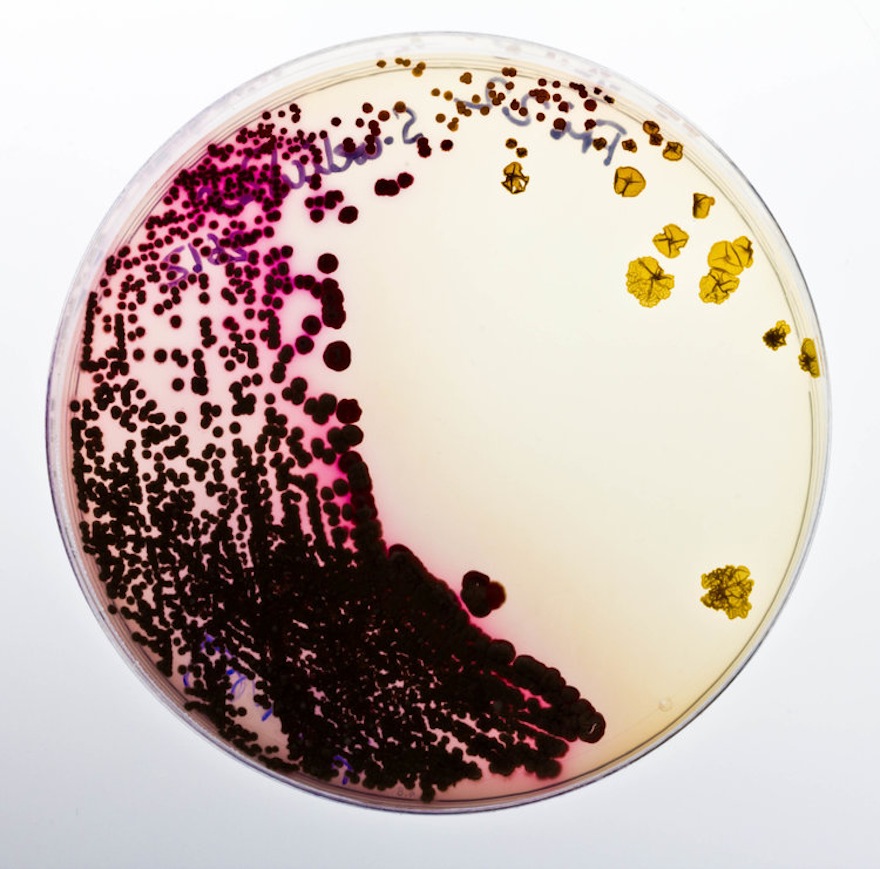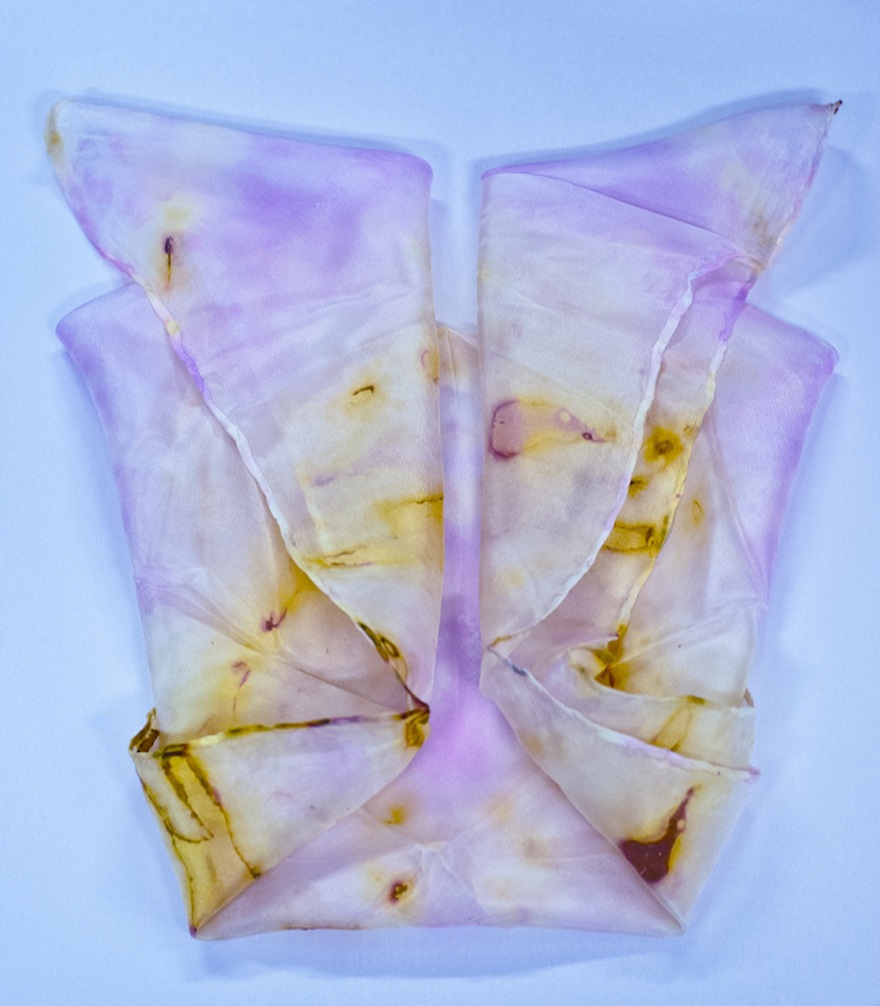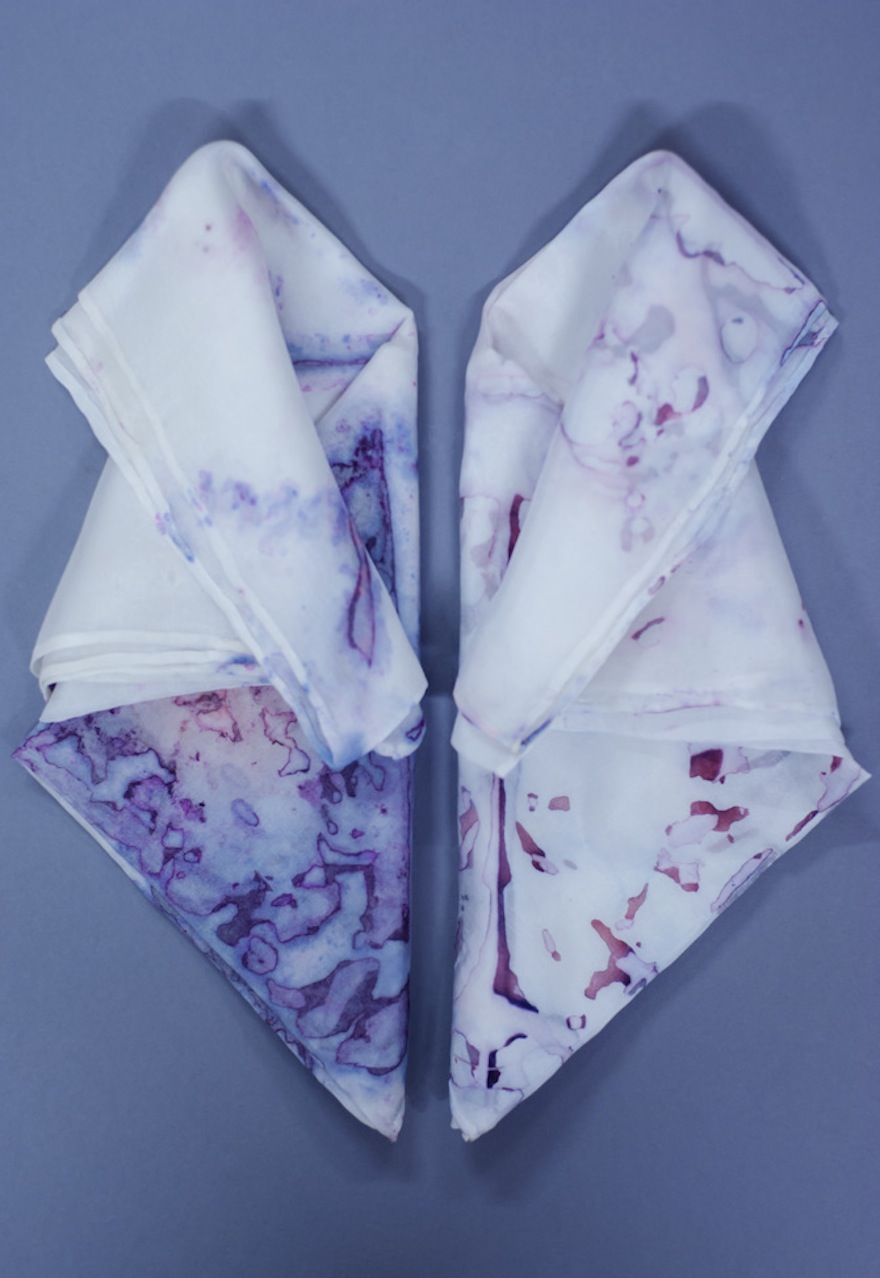
Bacteria can play harmful roles in the lives of humans – mostly causing disease and spoiling food. But these microorganisms are also exploited by us in a number of beneficial ways, playing important roles in agriculture and industry. However, these benefits have long been understood and the rest of their potential has remained shrouded in relative mystery. Now, a number of developments in the energy and textile sectors are proving that we may have underestimated the tiny systems.
Natsai Audrey Chieza uses bacterial colonies in the production of her studio’s range of vibrant and rhythmically patterned scarves. "I was interested in how we could take this bacteria and give it a new purpose by manipulating the growth medium,” she adds.
Called The Fold, the series of silk scarves serves as an example of the aesthetic possibilities that bacteria can yield, each colourful piece individually dyed by millions of bacterial colonies. It is created by placing the textiles inside small petri dishes that are filled with living, pigment-producing bacteria.
Chieza’s goal wasn’t just to harvest this pigment and use it in conventional ways. Rather, she initiated a process of “co-cultivation” with the bacteria that revealed new pigments and directed the microorganisms to attach themselves to the fabric naturally and intuitively, effectively shifting the colours that were being produced.



Besides the creative and sustainable solutions to some of the textile industry’s issues (specifically its dyeing process and subsequent environmental impact), bacteria could also bolster the field of microelectronics. Researchers from the Binghamton University have created what they’re terming a “bacteria-powered battery on a single sheet of paper”.
The device consists of a piece of chromatography paper, a ribbon of silver nitrate, a layer of wax (which forms a cathode) and a reservoir made of a conductive polymer (acting as an anode).
Foldable, the paper battery is powered when sprinkled with a few drops of bacteria-rich water and could be used to power glucose monitors, detect pathogens, and power small electronics for days at a time. The latest example of what are becoming known as bio-batteries – which store power generated by organic compounds – the common bacteria found in wastewater is enough to easily power these specific ones.
"Among many flexible and integrative paper-based batteries with a large upside, paper-based microbial fuel cell technology is arguably the most underdeveloped," explained Binghamton University engineer, Seokheun "Sean" Choi. “We are excited about this because microorganisms can harvest electrical power from any type of biodegradable source, like wastewater, that is readily available. I believe this type of paper bio-battery can be a future power source for papertronics.”


You can learn more about Binghamton University’s bio-battery research here.






